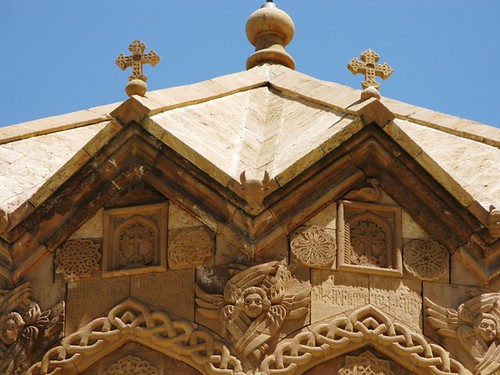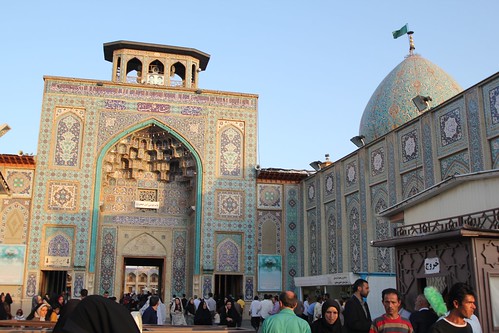January 12, 2012

I had no idea the Pandora’s box I’d be opening as I set off ten years ago to work on a book, loosely based on my Persian paternal grandparents. Half way through my second re-write of the manuscript, I found myself so moved by the 2009 Green Revolution that was blossoming in Iran that I put it aside. I decided rather to write about my personal journey as a foreign student, a freshman at the University of San Diego, at the time of the 1979 revolution that toppled the Shah’s regime and created the Islamic Republic. But that story gave way to another, and another, and three years later I have in my possession a total of 15 chapters of my life growing up in Iran, a student at an all-girl’s boarding school in England, an undergraduate at the University of San Diego, and as a political refugee.
The Pandora’s box contains nuggets of information that kept and keep falling into my lap each time I research a topic, from the Persian New Year, to the history of a town or evolution of the cinema or pop music in Iran. Each time I am presented with a tip that seems at first peripheral to my story, or that’s what I think, yet, as I dig deeper, I am forever transformed by what I discover.
Take the chapter I wrote about my baptism, orchestrated by my Christian Armenian maternal grandparents, without the knowledge or approval of my agnostic parents. But in writing this piece I needed details, so I started at the beginning. I was born at the American Presbyterian Hospital in Mashhad, a city in northeastern Iran, under the medical attention of two American physicians, one a Sgt. in the US army, and driven to our home, five days later, in my father’s canary yellow Cadillac El Dorado. It seems I was destined to end up in the US given my early brush with Americans!

Mashhad is also home to the shrine of Imam Reza, one of Shi’a Islam’s holy sites, attracting millions of pilgrims each year. The religious denomination of the American Hospital did not matter to my parents. My mother, a non-practicing Christian, my father a devout non-believer who considers himself a Persian through-and-through. They had selected the Hospital because of its state of the art medical facilities and personnel. But, my curiosity was seriously piqued by the existence of the Hospital, not only that it was an American Hospital, but a Presbyterian Hospital, in one of the holiest Shi’a cities in the world. Who were these audacious men and women so brazen to settle in a city entrenched in its own strict religious beliefs?

It turns out that as far back as the 1870’s American Christian missionaries had come to Iran (at that time: Persia) to help build schools, medical clinics and hospitals and of course, proselytize. One such missionary was a young man by the name of Howard Baskerville, born in Nebraska and educated at Princeton. Baskerville came to Iran in 1907 and began to teach Iranian boys and girls at the Presbyterian Mission School in Tabriz, northwestern Iran. Two years after his arrival, during Iran’s Constitutional Revolution, Baskerville took up the cause of the Iranians who were dissatisfied with the Qajar Dynasty (which pre-dates the Pahlavi Dynasty that was overthrown in 1979), by raising a volunteer army. He did so against the advice of the evangelical Presbyterian missionaries and the American Consul in Tabriz. He saw the Constitutionalists struggle for democracy identical to America’s war for independence from Great Britain.
The Qajar Royalists, with support from the Czarist Russia, had taken Tabriz under siege. Baskerville and his hundred-man army that included mostly young noblemen and some of his pupils attempted to break the ten-month siege. But as Baskerville and two others set off on a sortie to collect food for the city from a nearby village, he was shot in the back by a sniper from the Royalist’s army. The bullet went straight through his heart, killing him instantly. He was only 24.
One hundred years after his death, Baskerville continues to be revered as not only a hero by the Iranian people, who call him the “Iranian Lafayette,” but most importantly a shaheed, or martyr. His sacrifice at 24 turned him into a national legend. At his funeral, thousands turned out for a massive outpouring of mourning. He was buried in the Christian Armenian cemetery in Tabriz. When the Persian parliament reconvened seven months later, the first item on its agenda was a speech of tribute to the slain American. Even Ernest Hemingway credits his participation in the Spanish Civil War to Howard Baskerville and modeled the character of Robert Jordan in his novel For Whom the Bells Toll after him.
In 2003, a bronze bust of Baskerville was erected in Tabriz’s Constitution House. The Persian inscription at the bottom of the bust reads: Howard C. Baskerville. He was a patriot – history maker.
It is, therefore, interesting how an exploration of the place of my birth led me to Howard C. Baskerville. At a time when relations between Iran and the US continue to be strained and hostile, it is worth to remember the words of Baskerville, the young American missionary, who was quoted as saying: “The only difference between me and these people is my place of birth, and this is not a big difference.”
(The above is an excerpt from Jasmin’s memoire “Cinema Iran,” a work-in-progress.)

Jasmin S. Kuehnert
President & CEO ACEI, Inc.
www.acei1.com
![]()


